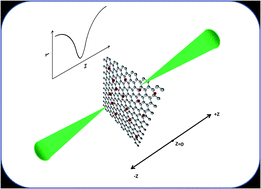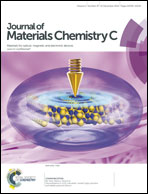Enhanced optical limiting and carrier dynamics in metal oxide-hydrogen exfoliated graphene hybrids
Abstract
Hydrogen exfoliated graphene (HEG) is an interesting class of few-layer graphene, which is synthesized via hydrogen induced simultaneous exfoliation-reduction of graphite oxide. HEG exhibits strong optical limiting (OL) due to defect states arising from a large number of structural defects as well as oxygen functionalities present on its surface. Recently, we have shown that OL in HEG can be improved by simple acid functionalization, as it results in an increased number of defects. In the present study, we demonstrate that the OL performance of functionalized HEG (f-HEG) can be further improved, in both the short-pulse (nanosecond) and ultrafast (femtosecond) laser excitation regimes, using hybrids of f-HEG with transition metal oxide nanoparticles (NPs) such as CuO. The enhancement in the OL efficiency of the hybrid arises from strong nonlinear absorption in CuO NPs, which is determined mostly by interband and intraband transitions. The presence of defect states in the samples is confirmed using ultrafast pump–probe measurements, which reveal a delayed carrier relaxation due to carrier trapping by these states. Furthermore, we show that the occurrence of induced thermal scattering is minimal in these water dispersed systems, such that OL occurs predominantly due to nonlinear absorption.



 Please wait while we load your content...
Please wait while we load your content...